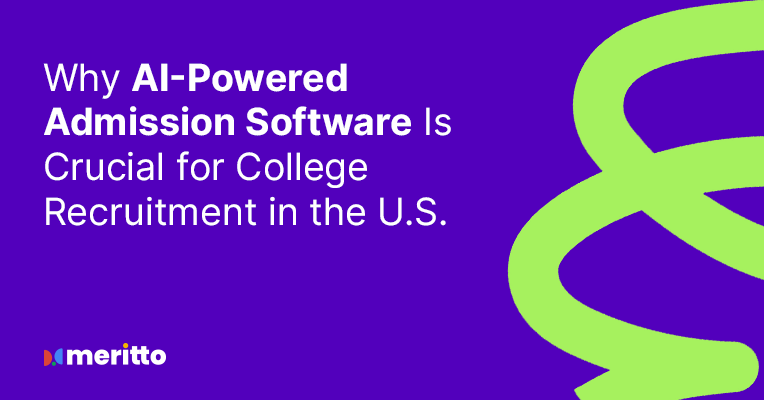As U.S. colleges and universities face declining enrollments, rising competition, and growing pressure to personalize the student experience, one solution is emerging as a clear game-changer: AI-powered admission software. This technology is not only transforming how institutions recruit and admit students but also helping them do more with less something that’s becoming increasingly critical in today’s resource-strapped environment.
The shifting landscape of U.S. higher-ed admissions
The last few years have brought major disruptions to the U.S. higher education system. According to the National Student Clearinghouse, undergraduate enrollment has dropped by over a million students since 2019. The reasons are varied ranging from demographic shifts and affordability concerns to the rise of alternative career pathways like bootcamps and certifications.
In response, institutions are realizing that traditional methods of outreach and follow-up just don’t cut it anymore. That’s where AI-powered admission software steps in.
What is AI-Powered admission software?
At its core, AI-powered admission software uses machine learning and automation to optimize every step of the admissions journey. From identifying high-intent prospects to nurturing leads, managing documents, and predicting enrollment behavior, this technology replaces manual work with intelligent systems that work 24/7.
It doesn’t just automate tasks it learns from them. For example, if a student drops off during the application process, the software can identify common patterns and recommend interventions, like sending a timely reminder or personalized video message.
Benefits that speak to the U.S. institutions
Here’s how AI-powered admission software delivers measurable value to enrollment teams across the U.S.:
- Faster response times: American students expect quick, digital-first experiences. AI-powered systems can instantly respond to inquiries, answer FAQs, or book campus tours, all without waiting for office hours.
- Personalization at scale: U.S. applicants are diverse, domestically and internationally. AI helps tailor messaging based on location, academic interest, and behavior, making outreach more relevant and effective.
- Lead prioritization: With shrinking marketing budgets, it’s more important than ever to focus on students who are most likely to apply and enroll. AI scores leads based on historical data and behavioral cues, allowing teams to invest their time wisely.
- Streamlined operations: Administrative fatigue is real. AI handles repetitive tasks like document collection, deadline reminders, and data updates, freeing up teams to focus on high-impact work.
AI is not just for the big players
You don’t need to be an Ivy League school with a massive tech team to benefit. Many U.S. institutions from community colleges to private liberal arts colleges are adopting AI-powered admission software to compete more effectively.
In fact, smaller institutions may benefit the most. With limited staff and rising expectations from Gen Z applicants, AI can level the playing field by providing the speed and personalization that students expect without overburdening existing teams.
Real-world impact: From interest to enrollment
A recent study found that institutions using AI-powered admission software see higher inquiry-to-application conversion rates. Why? Because AI allows schools to act faster and smarter reaching out at the right time with the right message.
In the U.S. market, where prospective students often apply to multiple colleges and expect near-instant responses, even a 24-hour delay can mean losing a student to another institution. AI ensures that engagement doesn’t pause just because someone on your team is out sick or stuck in back-to-back meetings.
Looking ahead: AI is here to stay
As AI continues to evolve, so will its role in admissions. U.S. institutions are already exploring predictive analytics for scholarship modeling, AI-driven interview simulations, and even sentiment analysis in student essays. The potential of AI-powered admission software is far from tapped.
But it’s not just about technology it’s about strategy. Institutions that embrace AI now are better positioned to adapt to ongoing changes, serve their students more effectively, and remain competitive in a rapidly shifting market.
Final thought
In today’s enrollment climate, agility, efficiency, and personalization aren’t just nice-to-haves—they’re essential. AI-powered admission software gives U.S. colleges and universities the edge they need to meet rising expectations, simplify complex workflows, and ultimately drive better outcomes. For institutions serious about future-proofing their admissions strategy, investing in this technology is no longer optional; it’s critical. Schedule a personalized demo today
- How AI-Powered student recruitment is shaping the future of U.S. enrollment
- The rise of AI enrollment software in U.S. institutes
- AI-Based admission software for U.S. higher education
- Why the right AI student engagement platform is critical for U.S. enrollment success
- How an AI education CRM helps U.S. institution stay ahead




